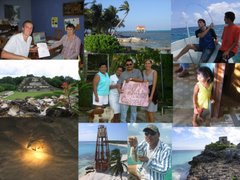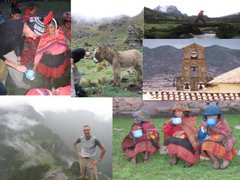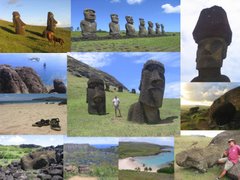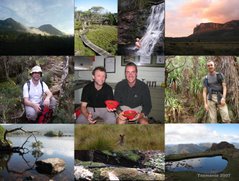

THE GOOD
ice-cream for 6p, beer for 25p in Bolivia
mojitos and salsa dancing in a La Paz club in the wee small hours of Ne'erday 2007
celebrating in the main square as Cusco beat Lima to win the Peruvian league
ablando Espagnol con las personas sympathicas (todos!) de Sud America
floating for hours across the mirrored surface of the Bolivian salt lake.
dancing to Blur and the Chemical Brothers in a Cusco club on boxing day
La Serena, Chile - home to the most beautiful people on earth (except if you're from Argentina)

THE WEIRD
kissing a Peruvian ass
stern-gazing und beir trinken mit Constance und Regina unter unheimlichen klaren lugen
loopy lupin loping ladies of La Paz
drinking (inventing) mine-shaft - a wicked combination of 96% miners' alcohol (65p per litre) and sprite
Peruvian rail's surprise cabaret and fashion show
deja vu - every day, everywhere - what was that all about?


ice-cream for 6p, beer for 25p in Bolivia
mojitos and salsa dancing in a La Paz club in the wee small hours of Ne'erday 2007
celebrating in the main square as Cusco beat Lima to win the Peruvian league
ablando Espagnol con las personas sympathicas (todos!) de Sud America
floating for hours across the mirrored surface of the Bolivian salt lake.
dancing to Blur and the Chemical Brothers in a Cusco club on boxing day
La Serena, Chile - home to the most beautiful people on earth (except if you're from Argentina)

THE WEIRD
kissing a Peruvian ass
stern-gazing und beir trinken mit Constance und Regina unter unheimlichen klaren lugen
loopy lupin loping ladies of La Paz
drinking (inventing) mine-shaft - a wicked combination of 96% miners' alcohol (65p per litre) and sprite
Peruvian rail's surprise cabaret and fashion show
deja vu - every day, everywhere - what was that all about?


THE UNFORGETTABLE
- looking down on Machu Piccu through the mist
- whisky and redbull on Christmas morning, in a tent, 15000 feet up in the Andes
- walking across the island of the sun on Lake Titicaca
- spotting a pair of Condors circling on the thermals over the Bolivian altiplano
- mining...
- giving out hot chocolate to the kids of Quishirani and Cuncan - sacred valley, Peru.
- cabaret and jazz clubs and night clubs and watching the sun come up all in 24 hours in Santiago
- appearing on Bolivian tv and having to redo the interview because the reporter couldn't understand my Spanish














 Our last stop before Santiago was the seaside port of Valparaiso.
Our last stop before Santiago was the seaside port of Valparaiso.
















